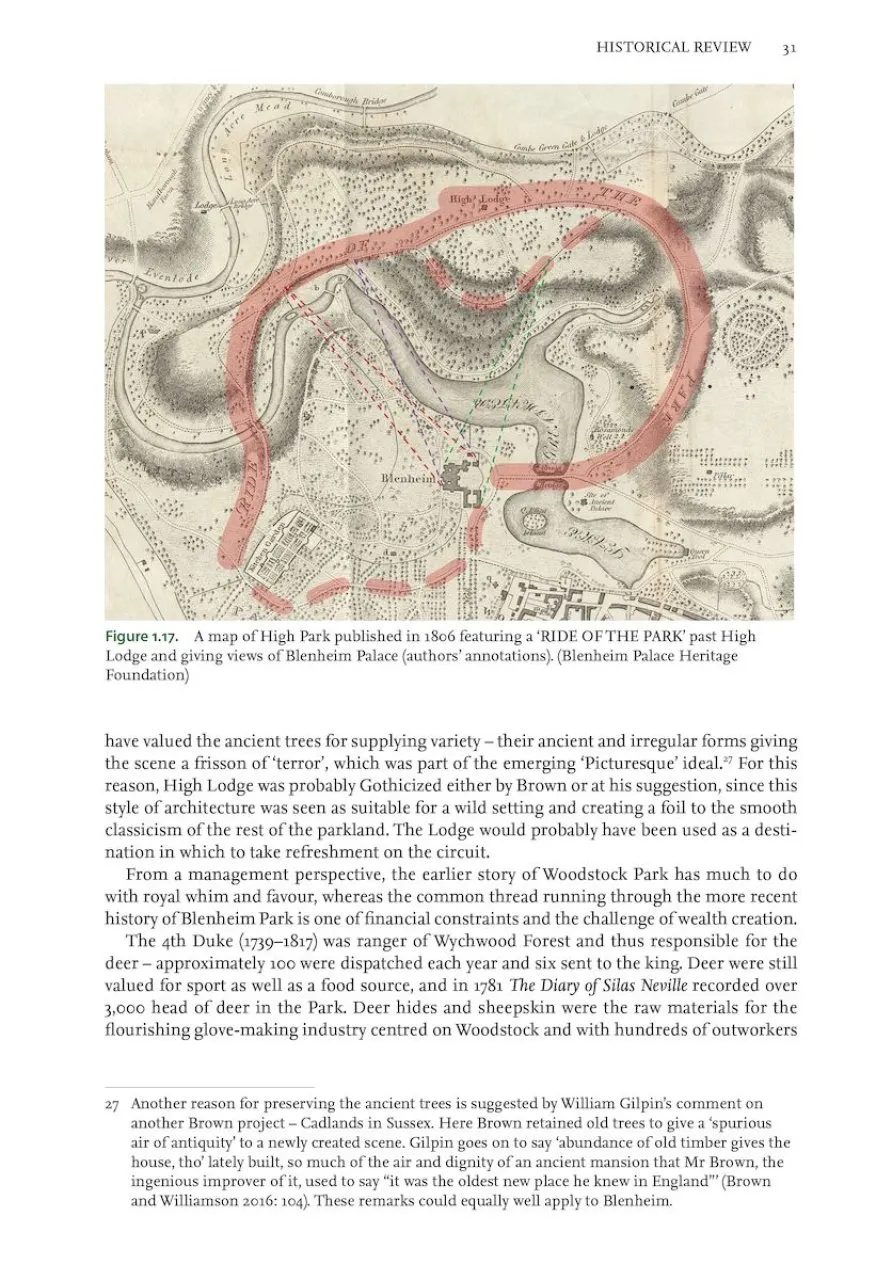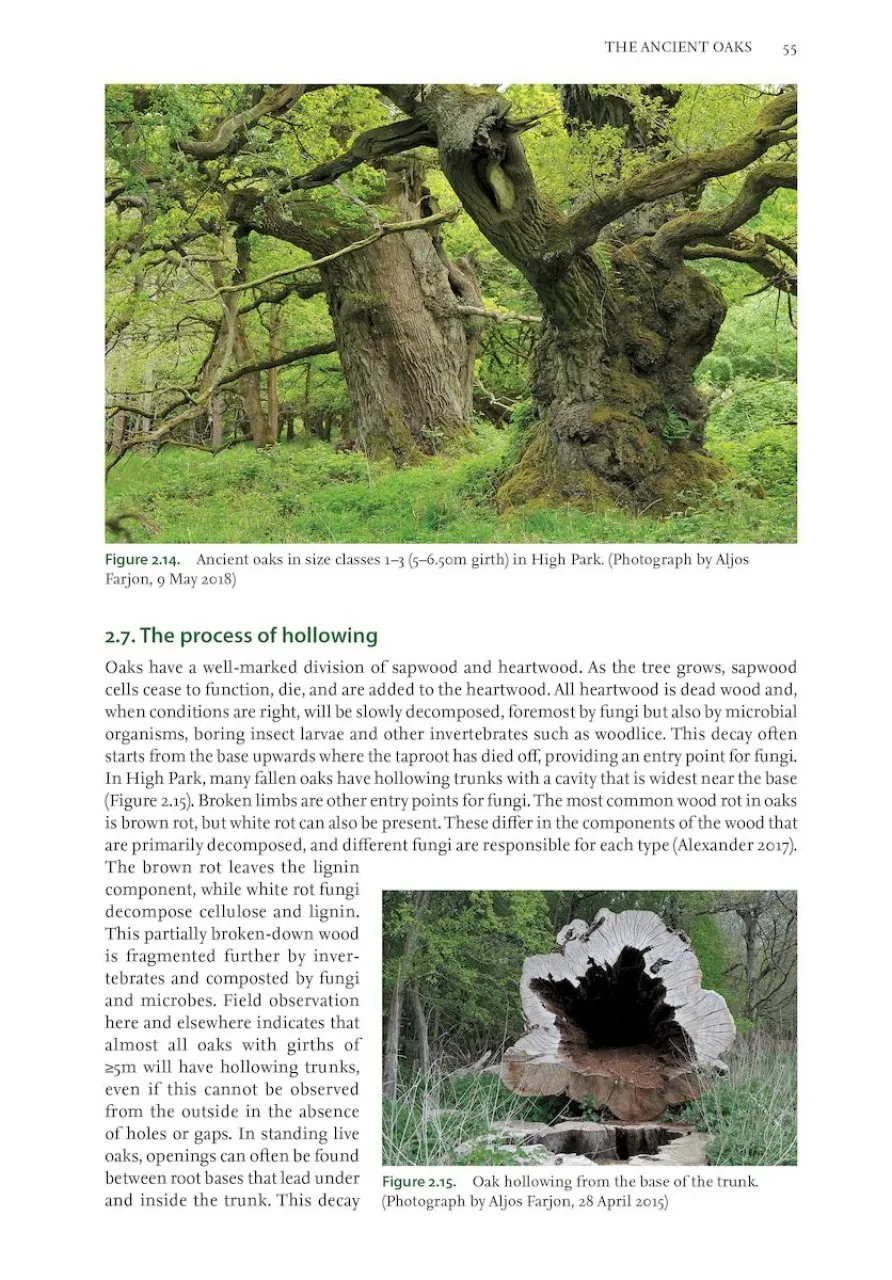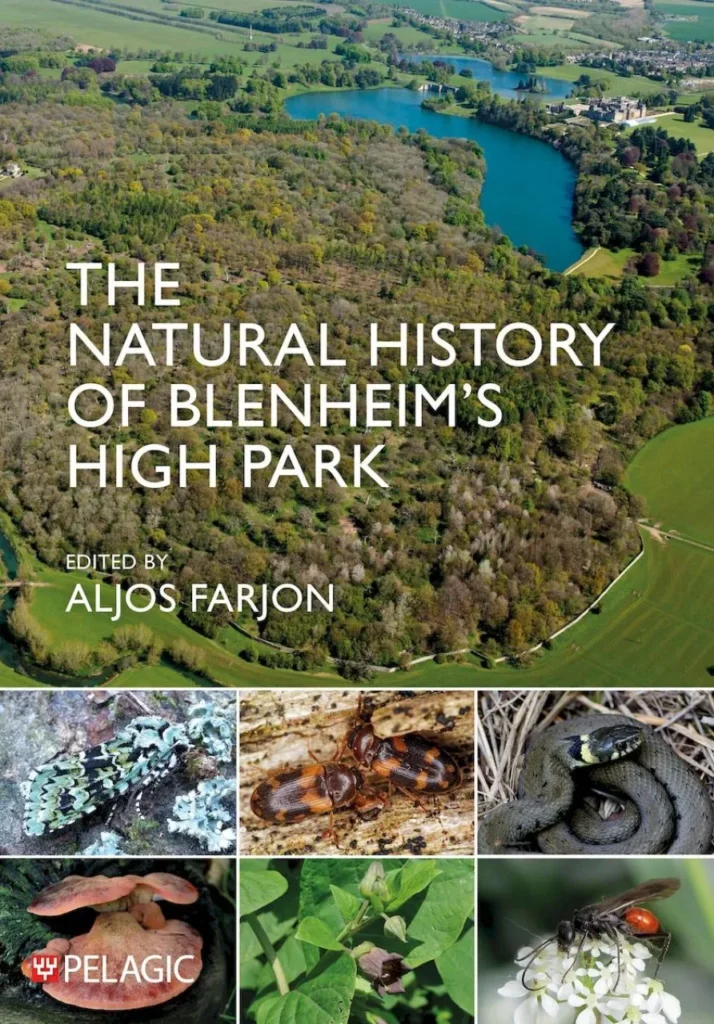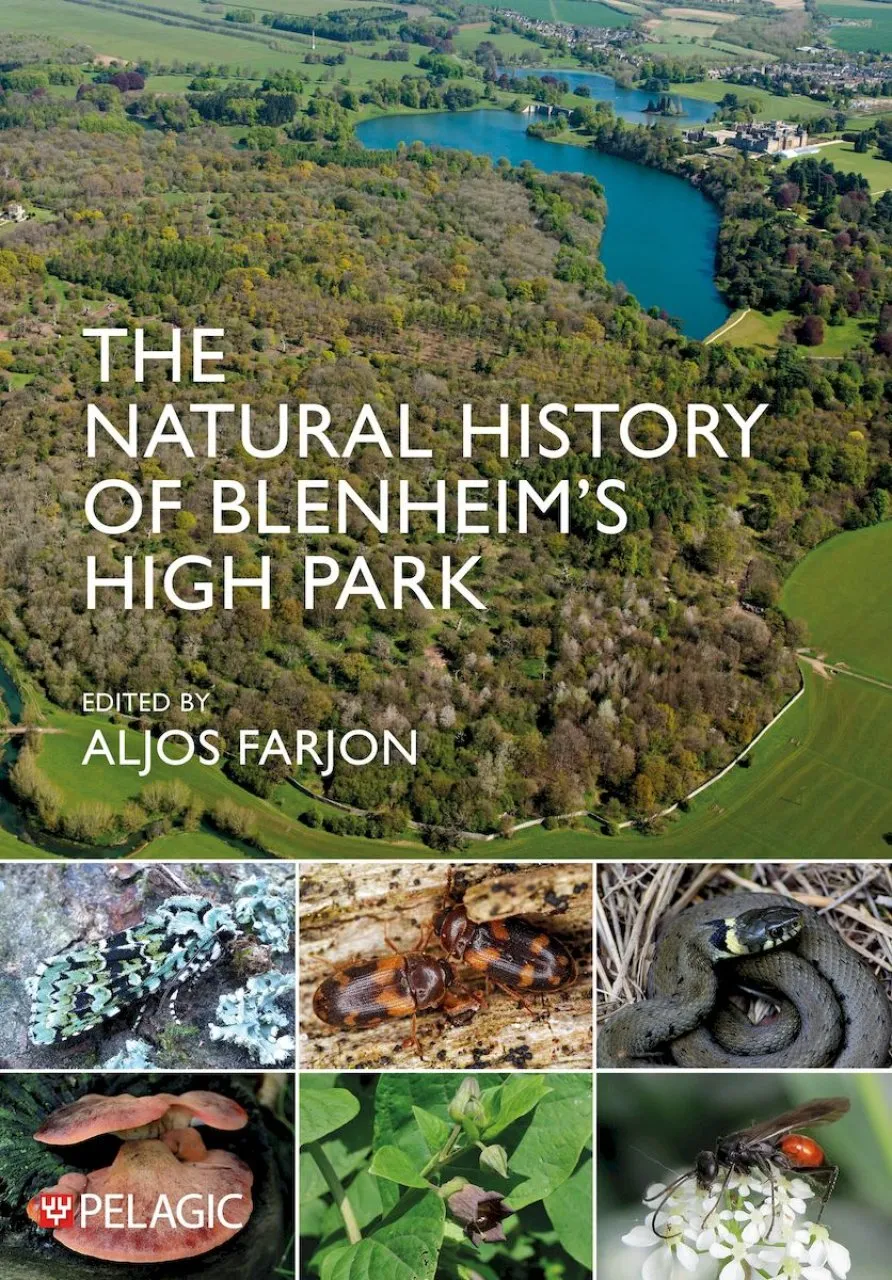Lists of sites important for conservation have been produced for over a hundred years, so it is not often that a place emerges into the top rank almost out of the blue, particularly not in lowland England. The park at Blenheim was designated as an SSSI in 1956, but while the citation from 1986 does refer to the ancient oaks in the wood pasture and to several invertebrate species associated with dead and dying wood, it is the lakes and their bird assemblage that come across as the more important feature. This book demonstrates why oak populations in the High Park (which only covers about 121ha) should be considered up there with the more famous Richmond, Moccas and Windsor Great Parks.

View this book on the NHBS website
Between 2014 and 2018, Aljos Farjon recorded all the oaks in the High Park over about 1.5m diameter. Leading on from this he organised surveys across a range of different species groups by a wide range of specialists (28 listed on the cover page) and the collation of past records held by local record centres. The result is a remarkably comprehensive account of the biodiversity of the site, with separate chapters on the flora, fungi, lichens, molluscs, arachnids, Diptera, Hymenoptera, butterflies, macro-moths, beetles, bugs and the vertebrate groups. These chapters include accounts of the more interesting species, commentary on the survey methods used and the degree to which the results from High Park can be compared with those from other sites, such as Windsor. There are nearly 100 pages of species checklists as appendices.
Preceding the species chapters, are a review of the history of this remarkable survival of an ancient wood pasture alongside the designed landscape around the palace, and an account of the oaks themselves. The survival of over 200 large ancient oaks, along with over 800 other, generally smaller, veteran trees, is linked to the site being once a Royal Park, later gifted to the Dukes of Marlborough. The limits on access to this part of the Blenheim Estate (past and present) also help explain why it was not previously that well known in the conservation world. The book ends with a short review of current management practices, focusing particularly on the recent reintroduction of cattle grazing to the High Park, although it is too soon to be able to report on the impact that this will have.

The text is well supported by clear tables, maps, figures and photographs. One challenge with a book that focuses on a single site is how to balance providing the detail that is specific to that place with material that may be of more general interest and relevance. There can also be issues with differences in style between chapters where there are multiple contributors. I feel that the editing of the chapters and overall design of the book have been generally successful in addressing both these issues. Moreover, the price for the hardback Letter seems very reasonable for what you get. I believe that this will become a ‘classic’ text.


